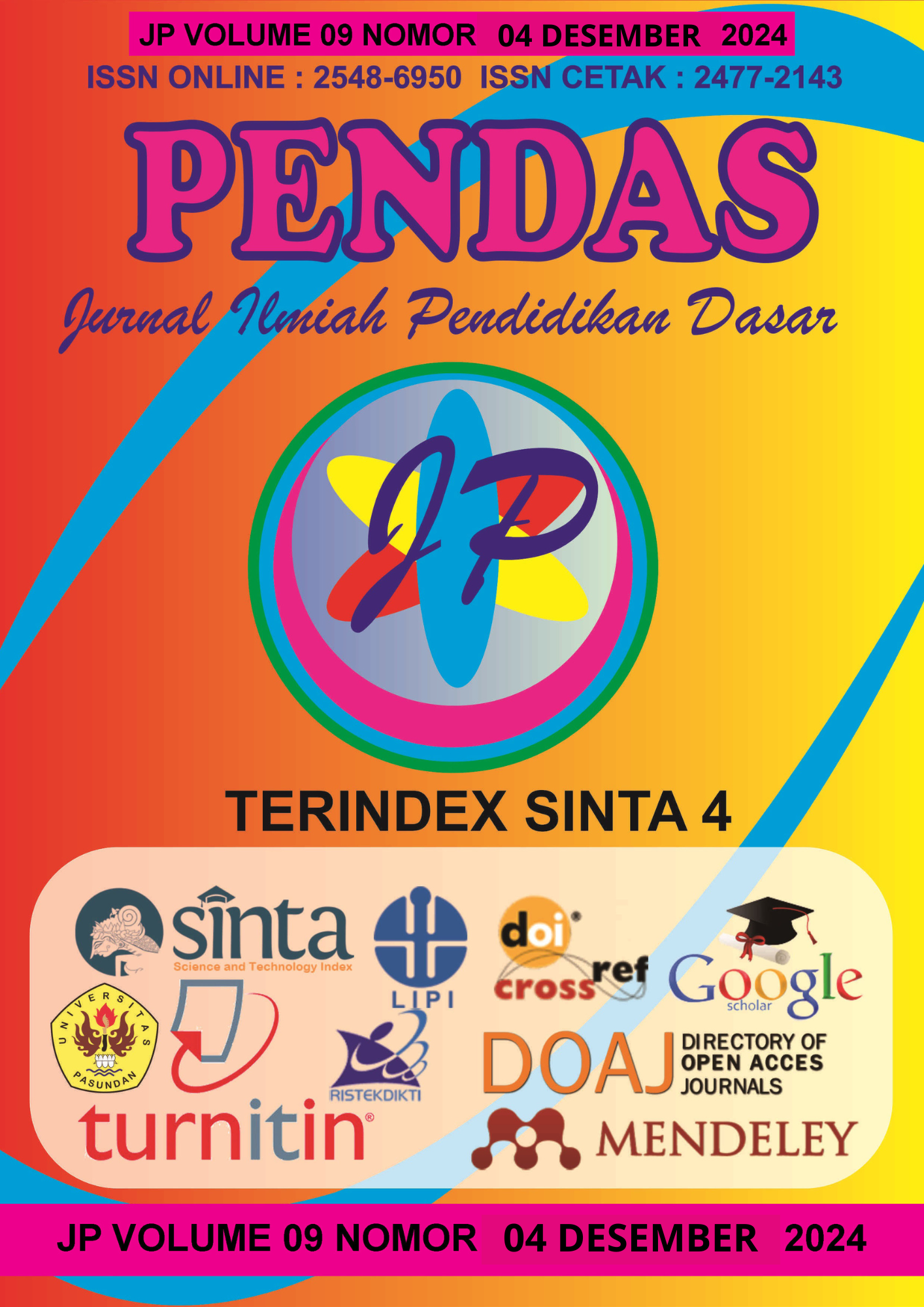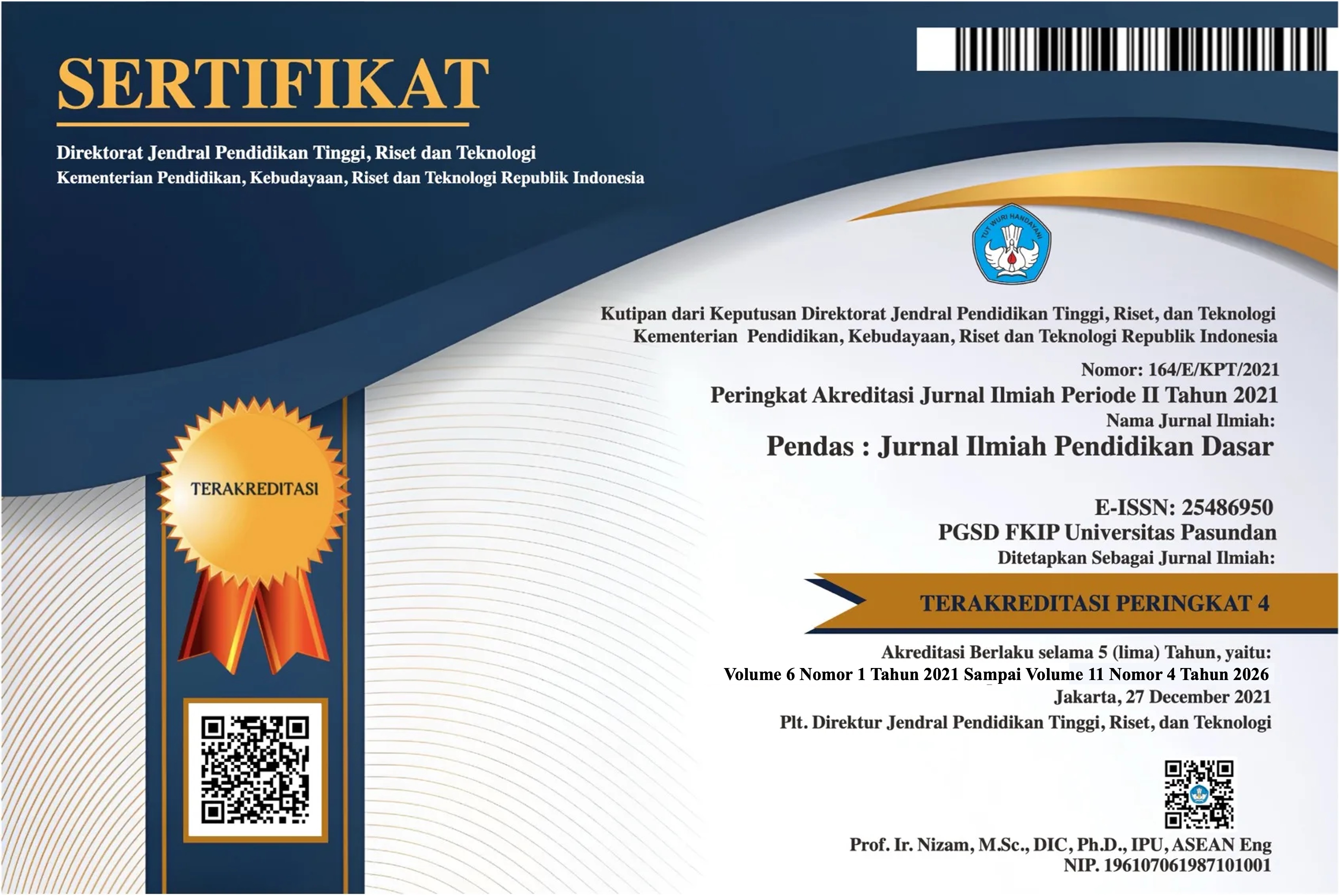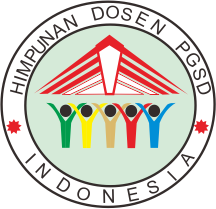TRANSFORMASI KEPEMIMPINAN SEKOLAH DASAR: STRATEGI EFEKTIF MENUJU PENDIDIKAN ABAD 21
DOI:
https://doi.org/10.23969/jp.v9i04.21559Keywords:
Transformational Leadership, Human Resource Development, Implementation of the 21 st Century CurriculumAbstract
This research discusses the leadership strategies of school principals in developing human resources in elementary schools in the 21 st century era. The aim is to identify effective strategies, reveal the challenges faced, and evaluate their impact on curriculum implementation and improving the quality of education. This research highlights the importance of transformational and distributed leadership approaches to support innovation and collaboration. This research uses a qualitative approach with a case study design. Data was collected through in-depth interviews, direct observation and document analysis. Purposive sampling technique was used to select 15 relevant informants. Data were analyzed thematically, involving coding, identifying major themes, and interpretation. Validity is maintained through method triangulation, member checking, and peer debriefing. Based on research, school principals in Majalaya District apply various leadership strategies, such as teacher empowerment, collaboration, and transformational approaches. The main challenges include limited funds, time, and teacher resistance. As a result, the majority of teachers are more motivated and actively involved. Implementation of the 21 st century curriculum was carried out in stages with stakeholder collaboration, resulting in increased performance of teachers, staff and learning effectiveness. Research shows that the success of school principal leadership is influenced by unique approaches, challenges and collaboration. SDN Padasuka 05 focuses on continuous training, SDN Kubang on collaboration, SDN Leuwidulang on transformation. Challenges in the form of funds, resistance and time are overcome by increasing teacher motivation. The work culture supports the 21 st century curriculum through collaboration between society and technology.
Downloads
References
Hulkin, S., Zulhijrah, Bella, & Shaleh. (2024). Strategi kepemimpinan kepala sekolah dalam pengembangan sumber daya manusia di sekolah dasar abad ke- 21. Educational Leadership Journal. (In press).
Creswell, J. W. (2014). Research design: Qualitative, quantitative, and mixed methods approaches (4th ed.). Thousand Oaks, CA:SAGE Publications.
Harris, A. (2008). Distributed school leadership: Developing tomorrow's leaders. London: Routledge.
Merriam, S. B., & Tisdell, E. J. (2016). Qualitative research: A guide to design and implementation (4thed.). San Francisco, CA: Jossey- Bass. Spillane, J. P. (2006). Distributed leadership. San Francisco, CA:Jossey-Bass.
Bass, B. M. (1990). Leadership and performance beyond expectations. New York: Free Press
Braun, V., & Clarke, V. (2006). Using thematic analysis in psychology. Qualitative Research in Psychology, 3(2), 77–101. https://doi.org/10.1191/1478088706qp063oa
Yani, F., & Hernawan, T. (2024). Transformasi kurikulum dalam konteks pendidikan abad ke-21: Peran strategis kepala sekolah. Journal of Educational Transformation, 12(3), 45–60.
Downloads
Published
Issue
Section
License
Copyright (c) 2025 Pendas : Jurnal Ilmiah Pendidikan Dasar

This work is licensed under a Creative Commons Attribution 4.0 International License.



















